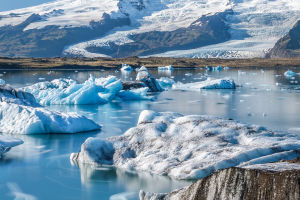There are many places in the world where the aurora can be seen, such as Canada, and Alaska, as well as Iceland, Finland, and Sweden in northern Europe.
The Antarctic also has the southern lights, but due to geographical reasons, the observation conditions are worse and the cost is higher. But under the aurora in Norway, there are also magnificent fjords, quiet fishing villages, deserted islands, and endless Norwegian forests.
What's more, the locations in Norway to view the northern lights are much warmer than the other places mentioned above. So, even though Norway is more expensive than other places, it's worth it.
But watching the aurora is a bit like watching whales. There is no guarantee that you will see it when you go there, and no matter how much money you spend, there is no guarantee.
This article will show you how to increase your chances of seeing the aurora in Norway.
Although Norway has only 5.3 million people, this does not mean that Norway is a small country. Norway's land area is 385,203 square kilometers, which is more than 20,000 square kilometers larger than Germany, ranking sixth in Europe.
Norway's southernmost to northernmost distance is 1,750 kilometers, and the chances of seeing the aurora in most parts of Norway south of the Arctic Circle are slim.
To see the aurora in Norway, you have to go at least inside the Arctic Circle, which means as far south as Bodø. Further north, Svalbard is also a great place to watch the aurora.
Of course, because of light pollution, the aurora isn't easy to see in cities unless the intensity is high. The best viewing locations are on the outskirts of the city.
Thanks to the huge heat brought by westerly drifting in the North Atlantic, the entire west coast of Norway has a relatively warm and humid temperate oceanic climate despite its high latitude.
Looking at the average temperature in January, Norway's west coast is 15 to 20 degrees Celsius warmer than Asia and the US’s east coast at the same latitude.
At the same time, the warm and humid air from the sea and the dry and cold air from the Scandinavian mountains are intertwined, resulting in more rain and snow in autumn and winter on the west coast of Norway.
Since the aurora occurs at an altitude of more than 80 kilometers, if it is rainy (snow) weather, the clouds will block the aurora.
September on the northwest coast of Norway is generally not too rainy, but from October to December, there is a high probability that it will be rainy (snow) for several days.
Then it will start to get better in January, and the weather will be drier in February and March.
It does take a little luck to see the aurora. If you are unlucky, it is possible that it will be rainy and rainy for three or four days in a row, and you will not be able to see anything.
It's also possible that you actually looked at it and just didn't realize it. The most common auroras are green, followed by red, and blue-violet auroras are rare. Sometimes, the aurora is so gray that you can mistake it for a cloud.
If you really can't see the aurora, don't be unhappy. Besides the aurora, there are plenty of interesting things to do on the northwest coast of Norway. This is also the advantage of coming to Norway to see the aurora.
If you are still obsessed with the aurora after experiencing the natural scenery and ice and snow activities in Norway, you can try the last method.
Book an evening flight out of northern Norway, choose a north-facing window seat, keep your eyes closed to the window and cover the cabin lights with something like a coat or scarf, the chance of seeing the aurora is very high after the plane takes off and rises above the clouds.


